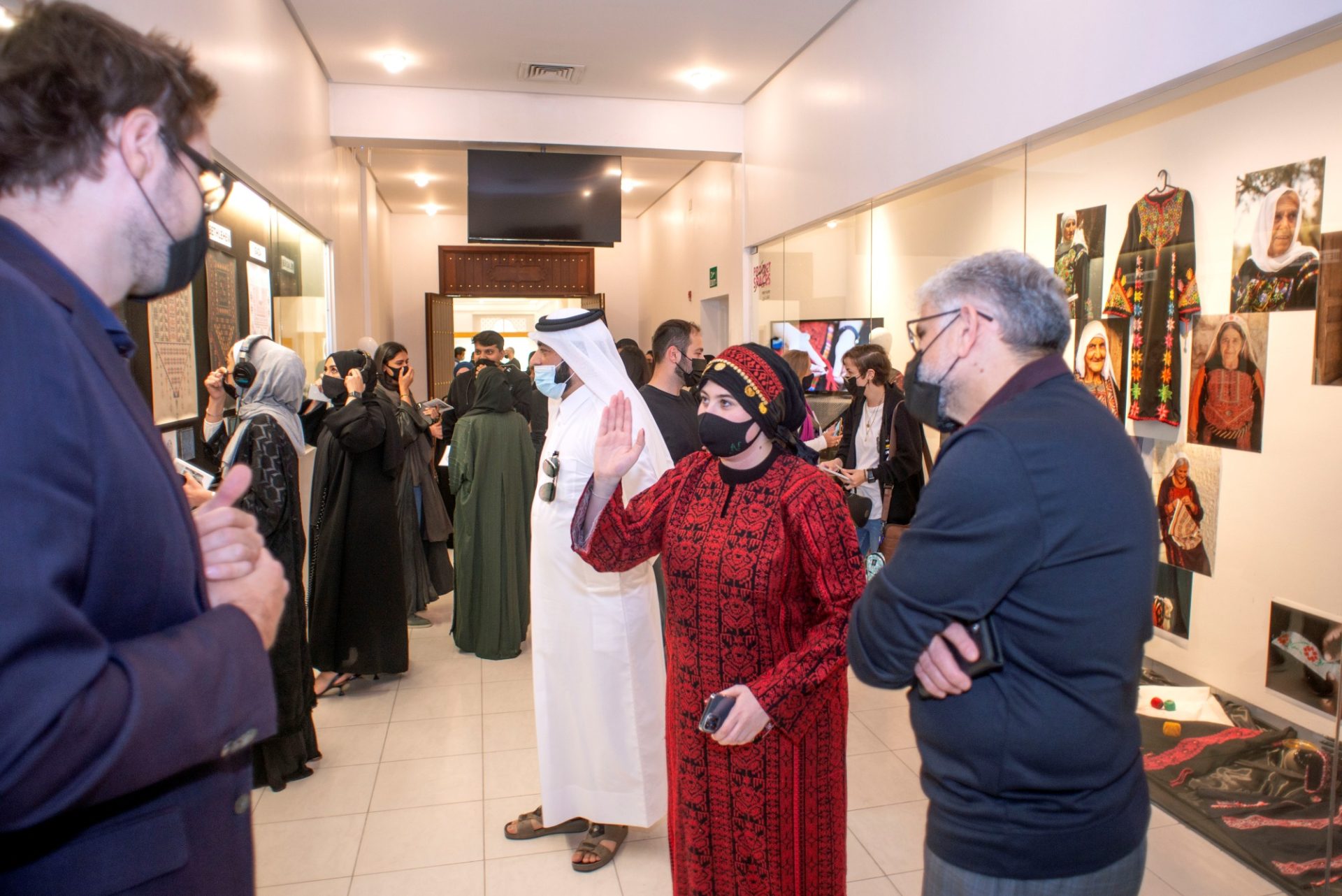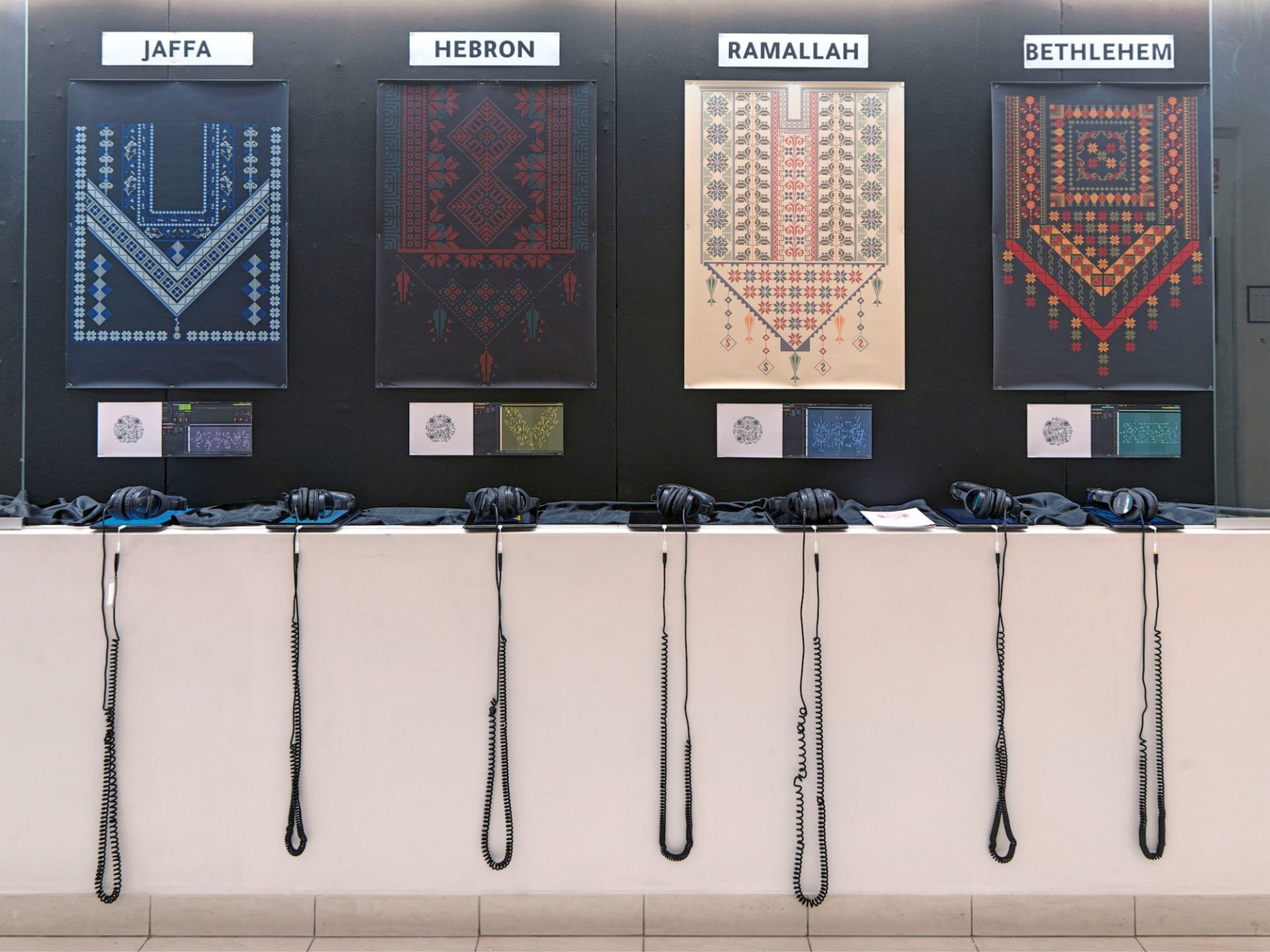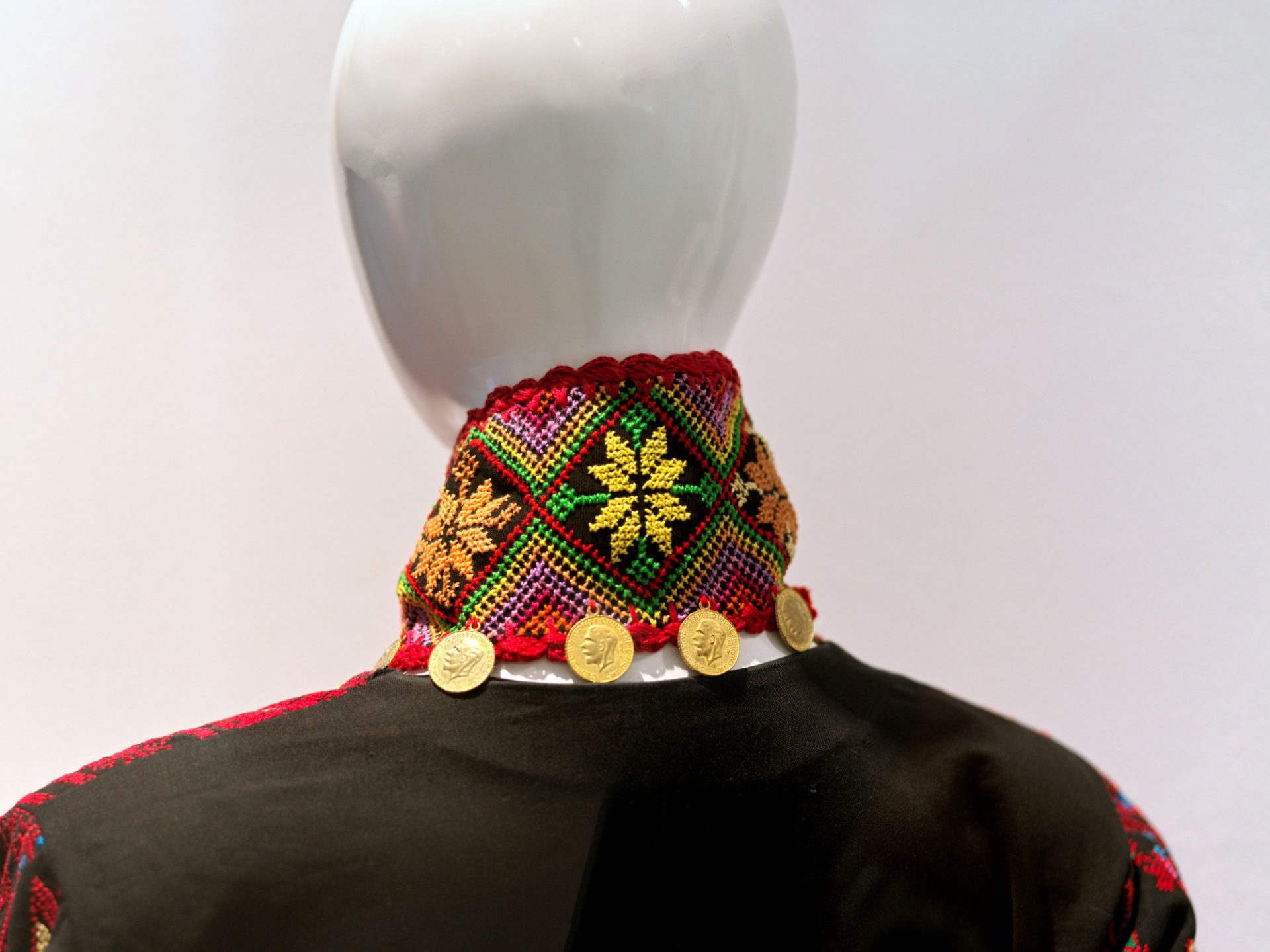The Sound of Palestinian Embroidery
If anyone has wondered how embroidery sounds like, then ‘Extending traditions through the sonification of Palestinian embroidery’ by Naima Almajdobah, senior graphic design student, on display at the Project Space Glass Display, in VCUArts Qatar gives you a fair idea, a audio-visual experimentation like never before.
Naima Monif Almajdobah’s project occupies the VCUArts Qatar Project Space Glass Display in the corridor that connects the main lobby to the auditorium. It stands out for the bright and beautiful embroidered Palestinian embroidery that catches the eye of any passer-by. But Naima’s project is beyond visual patterns and beautiful embroidery, it is a audio-visual experimentation bridging cultural research, pattern making, and sound design, a first of its kind to be explored at VCUarts Qatar.
Almajdobah’s project tugs at heartstrings for its pure intent; it’s the project of a Palestinian who has never been to her country of origin. It’s the enormous joy and pride in the country she has heard being described for its beauty and peace, all of which is now shattered and wiped aside for stories of destruction and horror.
 “There is more to Palestine than just violence,” she says. “There is beauty that is not emphasised enough in the media, that is expressed through its culture, heritage, and traditions. There is one thing that all Palestinians are proud of and that is the Palestinian dresses, called the Thobes.”
“There is more to Palestine than just violence,” she says. “There is beauty that is not emphasised enough in the media, that is expressed through its culture, heritage, and traditions. There is one thing that all Palestinians are proud of and that is the Palestinian dresses, called the Thobes.”
Palestinians are so proud of their traditional embroidery that is found in abundance on their thobes. This art form was developed by Arab farmers who formed the majority of the population until the middle of the 19th century. It was an exclusively female art form developed and sustained by peasant women in hundreds of small villages in Palestine. And it is through this rich tradition that Almojdobah wishes to bring the focus on not just through illustrations and examples of the craft but through music that is specific to each embroidery that comes out of a particular village in Palestine.
“By creating this extra form of identity for these patterns, I am hoping to give them an added value as well as give people an additional feature to enjoy these alluring hand-sewn patterns,” she says, emphasising her love for the country of her ancestors.
Explaining the process involved, Almajdobah says, “The data in my project is the Palestinian patterns and motifs found on the thobes. Because of the unique stitching techniques, the patterns resemble 8-bit graphics similar to pixels from an old arcade game. These pixels can be translated into musical notes using a digital audio process called MiDi. The systematic structure of MiDi is similar to the structure used in the stitching allowing me to recreate the physical patterns digitally to play sound.”

 There are seven different style regions of embroidery that Almajdobah has brought to life through music and graphics and they are: Ramallah, Bethlehem, Jerusalem, Hebron, Jaffa, Gaza, and Beersheba.
There are seven different style regions of embroidery that Almajdobah has brought to life through music and graphics and they are: Ramallah, Bethlehem, Jerusalem, Hebron, Jaffa, Gaza, and Beersheba.
“This project will shift the mindset of people and will focus on the beautiful Palestinian culture,” stresses Almojdobah, “Let the sound of history enchant you.”
The exhibitions are organised by The Gallery at VCUArts Qatar and are on display at specific locations in the building.
All Images by Markus Elblaus
Visitors can schedule tours during the University’s working hours via Eventbrite at https://www.eventbrite.com/e/what-is-home-to-you-a-solo-exhibition-by-mohamad-hafez-tickets-244285533607





